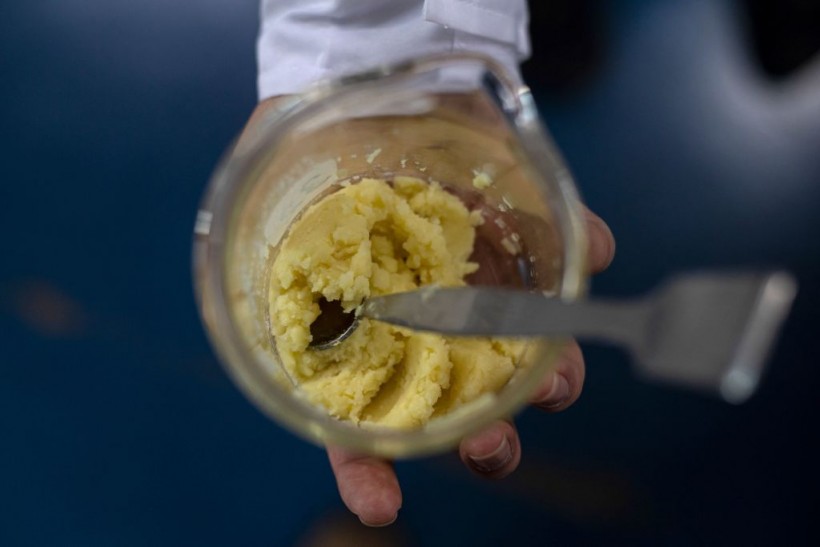NASA, JAXA, and the European Space Agency are working together with the food business to deliver better space food. At the CES 2023 in Las Vegas, several solutions were presented to provide humans with food during extended space flight and habitation. One that stood out is the one from Beehex, as reported by Interesting Engineering.

(Photo : MARTIN BERNETTI/AFP via Getty Images)
Food engineer Roberto Lemus shows a portion of food before putting it into a 3D printer at the lab of Chile's University in Santiago, on June 17, 2022.
Beehex offers deep-space food solutions via 3d-printed food technologies. Now, the company has made a way to turn plastic into consumable food.
The project is funded by The Defense Advanced Research Projects Agency (DARPA), which is the biggest government-backed force behind innovation in the US.
How It Works
The company has changed a shipping container, in which one side is where the plastic is collected that will be shredded. Then, it will move into the bioreactor that contains a specific engineered bacteria.
The engineered bacteria eat the plastic and convert it into biomass. Then, the biomass can be used to produce various textures and shapes.
Therefore, creating food out of plastic is possible on one side of this container that can produce food out of plastic.
The idea for this concept is to put this type of container at food disaster relief operations such as those related to Federal Emergency Management Agency (FEMA) or locations where there are refugee camps.
According to Beehex, the machines can be sold to FEMA and other governments across the world, such as organizations like the United Nations. Eventually, the subcomponents of the machine will be made to fit into a spaceship and low Earth Orbit (LEO) space stations.
The company said that the payload should be extremely lightweight. They aim for the project to kick off around 2026 to 2027, with the first application to be on the moon.
Also Read: NASA's Deep Space Food Challenge to Pick Next Space Mission Menu-Insect Dish Suggested?
Space-Based Food
The main challenge for long-duration space missions, such as a trip to Mars, is the astronauts will be isolated from Earth. They might not be able to receive fresh supplies of food and must store what they have in a method to preserve the freshness, which leads to the idea of 3d food printing.
Eventually, 3D-printed food combined with this type of technology will be able to create a sustainable food solution for astronauts. This will allow astronauts to spend long periods of time in space, perhaps on the red planet itself, without the significant risk of nutritional illness.
3D food printing technology is a great idea. It can save both time and money in the kitchen while adding a level of customization and personalization to meals.
However, the future of this technology is somewhat unclear. If it was to become more affordable, and the public were to really take to the idea of eating printed food, could it lead to a wider range of food options, in a wider range of places?
Although 3D printing food is not available on the market yet, it is worth keeping an eye on what the technology will be capable of in the future. After all, it is predicted that by 2035, it will be one of the most prominent ways to consume food.
Related Article: German Astronaut Shares Photos of Space Food in an Experiment to Better Understand the Body






